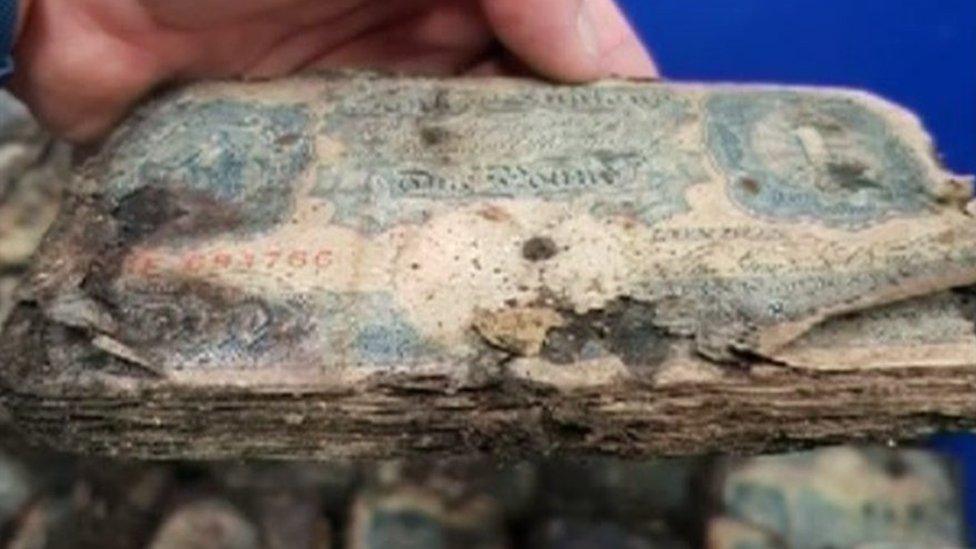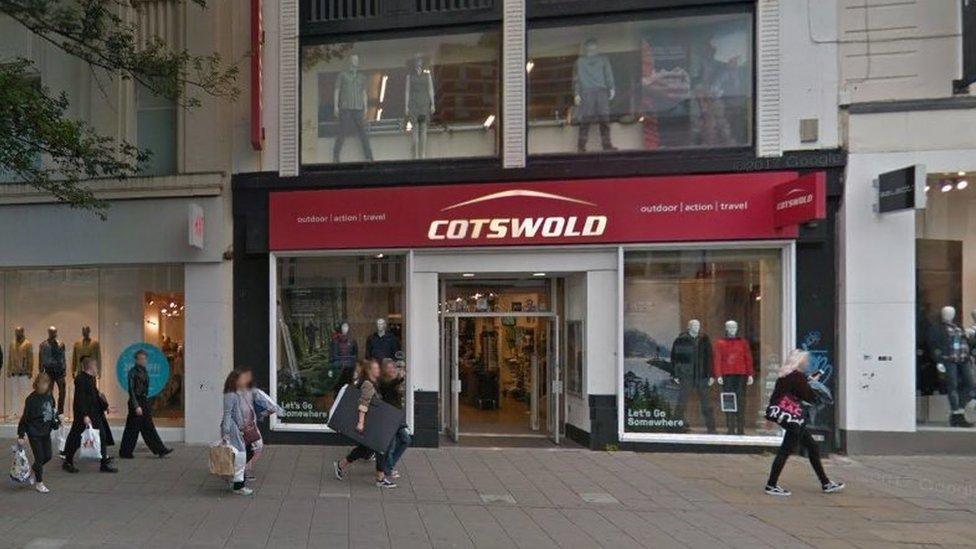Brighton shopfitter finds wartime bank notes worth £1m
- Published

The bank notes were caked in dirt and in a poor condition
A hoard of decaying bank notes dating back to World War Two have been found under the floorboards of a shop.
They were discovered during renovation work at the Cotswold Outdoor store in Brighton by shopfitter Russ Davis, and removed for safekeeping by police.
The face value of the £1 and £5 notes total about £30,000, which equates to more than £1m in today's currency.
The site in Western Road used to be Bradley Gowns, a trading arm of the London furrier and couturier Bradleys.
'Caked in dirt'
The notes were unearthed last month as layers and layers of rotten carpet, tiles and other flooring were being ripped up.
Recalling how he found them, Mr Davis said: "I just thought it was a block of wood, so I snapped it in half and then found a £1 note.
"All the notes were stuck together, you couldn't separate them, and they were caked in dirt.
"Some of them were really bad where you could see the metal water marks that run through the notes."

The cache of £1 and £5 notes were found in bundles of about £1,000 each
He estimated there were about 30 bundles, each worth about £1,000.
Mr Davis said he immediately knew the notes were old because of the amount of flooring that had been taken up.
They were also all blue, which was the colour of the emergency wartime currency first issued by the Bank of England in 1940.

The notes were discovered during the renovation of the Cotswold Outdoor shop in Brighton
It is not known who stored the notes or why, but Mr Davis said his first thoughts were that that they "could have come from a bank robbery, or been stashed during the war by someone who died".
Bank notes which have been withdrawn from circulation can be exchanged in person or by post by the Bank of England, external.